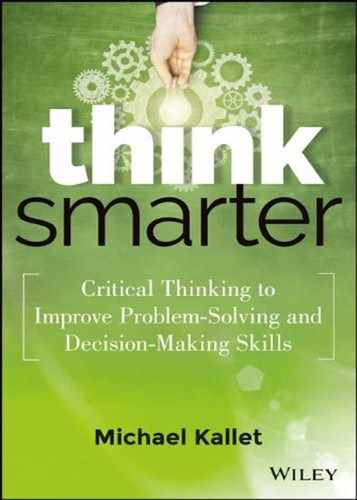Section V Decisions
Decisions can come very fast when you follow the critical thinking framework, because you've already done the heavy lifting in getting clear and concluding. You are clear on what the headscratcher is, and you have reached conclusions to solve it. Now it's a matter of acting—doing it or not doing it, deciding it's a go or no-go.
You might wonder why decisions have to be a separate step, if they're really just a call to go or no-go. Well, there are two reasons. First, although you might be the one responsible for solving a problem, you may not be the decision maker with respect to approving action. As a result, someone else has to do some thinking to approve it. Second, just because you figured out what to do doesn't mean it automatically starts to happen. You have to act (or decide not to act) and think differently than you did for clarity and conclusions to do so. As an example, take your to-do list. Although you concluded to do these tasks (that's why they're on your list), you haven't decided to do them—or they would be checked off your list.
We use just a few tools to help make decisions. First, we identify who the decision maker is. We often think we're the decision maker when we're actually the recommender. This doesn't make our job any easier; it just means we're not the individual responsible for signing off on the go or no-go. If your manager has to approve your action—even if it's something seemingly trivial—then he or she is the decision maker, not you. In addition to identifying who is the decision maker, you should know by when the decision needs to be made, as well as the need behind the decision (yes—decisions have needs, too). The central tool for decisions is the criteria used to decide. This is the decision maker's checklist of thresholds that must be met for him or her to say, “Go.” Last, a key component of the criteria is the risk perspective of a particular decision. We use these tools to decide whether to say yes or no.
Now we'll put the decision process to work by way of example. If you have reached the conclusion “I want to read about decisions,” then the decision you should now make is to turn the page to the next chapter.
